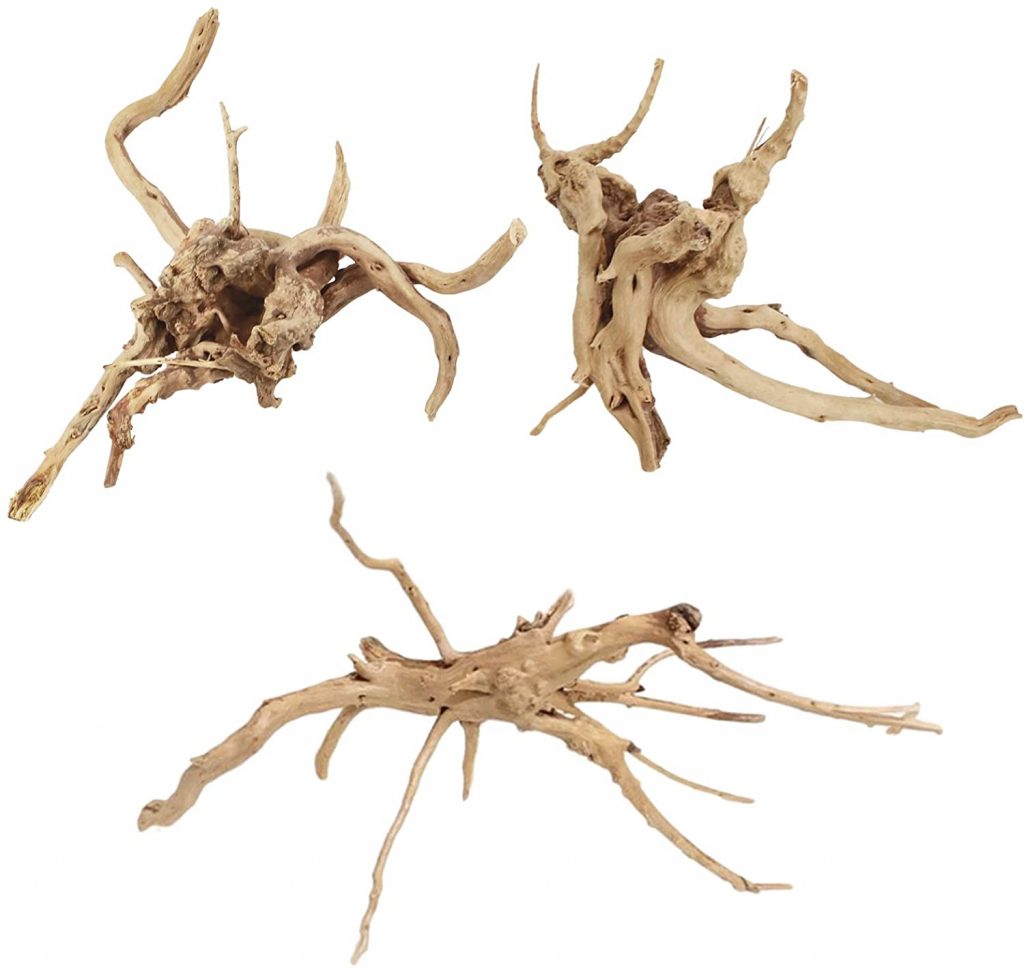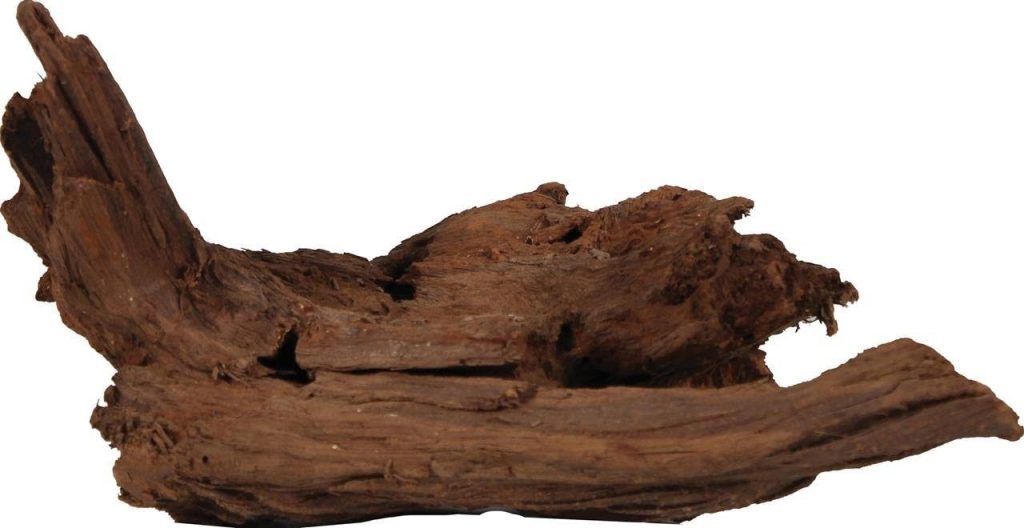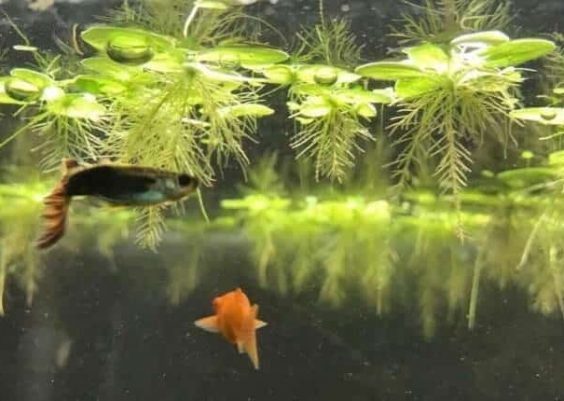Contents
As you want to aquascape your tank, aquarium driftwood is considered one of the most appropriate additions.
Driftwood can often be found on the seashores of a beach, river, or lake. Owing to the variety of colors, textures, shapes, and sizes, driftwood can bring unique and stunning visuals to your aquarium.
However, some driftwood can have a negative impact on the water quality as it might release tannins and discolor the water. In other words, not every driftwood can be used in your aquarium or you might need to change your water treatment methods to offset some certain driftwood.
There are a number of options available on the market that may make you feel overwhelmed. Therefore, in this post, we’ll discuss some of the most widely-used aquarium driftwood that you can take into consideration.
What is your layout style?
Before choosing a type of aquarium driftwood, you need to determine which style of aesthetics you want to achieve. Hence, you can find the most appropriate piece of driftwood and the most suitable fish species.
Planted driftwood
For those who love having trees or moss-covered logs as part of their layout, they should choose aquarium driftwood that can be the center of the design. Structures like branches can help form the silhouette of a tree. A cylinder can work as a classic log, or a piece of driftwood that is jagged at one end could be tailored to look like an uprooted tree that falls over.
Hardscaping
Hardscape is a term that refers to hard natural materials like rocks and driftwood. However, hardscaping, by itself, is a style of layout that focuses on forming rugged, rough-looking terrain. This kind of layout tends to be void of plant life. If you’re going to use a minimal amount of plant life, you can think of a win swept desert theme. For example, an eerie Gothic layout that combines driftwood with bony such as branches or roots; or a rugged mountain ridge with a twisted piece of driftwood.
Aquascaping
If you’re looking to get a lush green aquarium, then you might consider aquascaping. Most shapes and sizes of driftwood can be created to get an aquascape design.
11 Best Types of Aquarium Driftwood
1. Bonsai Driftwood

Bonsai driftwood refers to any natural driftwood created by artisan woodworkers in various shapes and styles, providing a natural beautiful appearance in your aquarium.
There are a great amount of bonsai aquarium driftwood available on the market. Some are the remains of actual bonsai that have died off, some are created by manipulating the branches of a full sized plan or combining multiple pieces of driftwood to replicate a bonsai.
Bonsai is perfect for natural and Iwagumi designs where driftwood and plants assemble to build tree-like formation. Most aquarists choose to pre-attache the bonsai driftwood to the rockets before setting up the aquarium.
Benefits
- Handmade and handcrafted by renowned artists
- A science of art combining various types of wood
- Available in many sizes and shapes
- Safe for your fish and underwater flora
- Enhance the quality of your water
- Soften the water and reduce the pH level
- Able to be used with aquatic plant species like ferns, Bucephalandra, anubias, etc.
- Able to be used to mimic the foliage on natural bonsai trees
Drawbacks
- Require careful maintenance
- Release tannic acids
- Need soaking
2. Manzanita Wood

Manzanita tree species are often seen throughout Western North American. It’s quite pricey but considered a good option for long-term investment.
Manzanita ranges from medium brown to reddish-brown. However, most of the red part belong to the bark which will be sandblasted off before being sold. Being a scrubby dryland tree, it gets a growth pattern lower to the ground, with curling and sweeping brands that generate a classic, balanced aquarium driftwood look.
Benefits
- Bring anti-bacterial properties for the inhabitants
- Decrease the pH and water hardness
- Come with a branchy appearance
- Rot-resistant thanks to the intensely slow decay
- Chemically inert and non-toxic
- Safe for fish, reptiles, and invertebrates
- Buffer specific rockets that might lightly increase the pH
- Aim to build a blackwater biotope
Drawbacks
- Easy to be broken into small pieces
- Might contaminate the water if you use it as fresh or raw
- Need long periods of pre-soaking or anchoring to float
- Not proper for hard water enclosures that require the pH level to be more than 7
3. Cholla Wood

Cholla wood is a stunning patterned piece of wood. It is difficult and pricey to obtain but has a low price. Cholla brings a striking appearance for aquascapes, with irregularly spaced holes, a twisting structure, and a hollow core for small fish and shrimp to explore.
Cholla does not tend to last as long as other solid varieties. Fine stemmed or intricate patterns likely wear away over a period of months to years.
Benefits
- Beautiful and unique appearance
- Non-toxic, making it safe for every type of inhabitants
- Provide a place for inhabitants to hide, eat, and breed
- Easy to sink
- Easy to saturate with water
- Great for soft water biotypes and enclosures
Drawbacks
- Might harbor debris and pest
- Require a thorough cleansing before you use it
- Not ideal for hard water enclosures that require the pH level to be above 7
- Not rot-resistant
- Require monitoring after extended periods of use
4. Azalea Roots

Derived from Asia, Water Azalea has magnificent branching structures. Fine vines growing from the wood will often spoil and break down in 6 to 12 months.
Water Azalea is an incredible addition to any aquarium, small or large that is not detrimental to your fish. Typically, it’s popular in a small fish tank due to its intricate nature.
Azalea driftwood has fine branches which will not last as long as the thicker ones. Thinker branched varieties are always appreciated. Thin pieces look amazing but too fragile to last over time.
Benefits
- Suitable for every level hobbyist
- No potential dangers
- Give off a moderate amount of tannin that supports freshwater setups
- Be a place for inhabitants to eat, hide, and breed
- Non-toxic and safe for every type of inhabitants
- Endure a long time before getting decay
Drawbacks
- Require a great deal of preparation time
- Not proper for hard water walled in areas that need the pH level to be over 7
- Require extensive stretches of pre-soaking or tying down for skimming
- Have a shelf-life
5. Malaysian Driftwood

Malaysian driftwood is southeastern Asian driftwood suitable for large fish tanks. It can be identified by its distinctive orange, dark color. This type of aquarium driftwood is an excellent perch for attached plants. Besides, it is sturdy enough to support some heavier objects.
Benefits
- Have touch appearance
- Proper for black water tanks
- Non toxic and safe for every kind of inhabitants
- Produce tannin that aids in freshwater setups
- Last a long time before getting decay
Drawbacks
- Have a tendency of discoloration
- Require pre-soaking to avoid dark color water
- Might percolating tannins
- Need extensive stretches of pre-dowsing or tying down for skimming
6. Mopani Wood

Mopani driftwood has a thick but twisting character reminiscent of a flowing stream, with dark knots spreading along the body. It’s a fine-grained wood with all kinds of interesting nooks and crannies for small fish to hide and live plants to attach.
Moreover, this aquarium driftwood has a distinctive two-toned color pattern, with the outer side of a medium tan and dark chocolate heartwood. It can look like a massive tree when surrounded by live plants.
Mopani does change water chemistry over time and buffer your pH towards acidity. Provided that you take steps to counteract this or prefer an acid pH, it’s not a big problem. It also has a wide amount of tannins and humic acid, even after boiling and a long soaking time it will likely stain your water brown.
Benefits
- Have remarkable shapes and textures thanks to dramatic two-tone wood
- Suitable for soft water biotypes
- Lightly lower your pH level
- Good for freshwater tanks that thrive in parameters below 7 pH
- Leach out tannic acids
- Provide shelter for tropical freshwater fish
- Heavy and sink instantly
Drawbacks
- Release tannins
- Require soaking to prevent discoloration
- Risk of decay
- Require long periods of pre-soaking or anchoring for floating
- Likely hold tree sap after a long time
- Not appropriate for hard water enclosures that require the pH level to be above 7
7. Tigerwood

If you are searching for the perfect centerpieces for your aquarium, you should consider tiger driftwood. Spindly and stumpy, tiger driftwood has a distinctive root structure reminiscent of an underwater tree. The complicated shape and variation of brown tones makes this aquarium driftwood appealing to look at and a good place for skittish fish to play around.
Tiger driftwood is exceptionally stretched yet not thin or spiderly. Most pieces for aquariums are huge and extra huge. It’s impossible for you to join plants and greeneries to this wood with ease.
Benefits
- Lighter-weight wood
- Branchy and voluminous
- Attachable with other aquarium plants
- Have multiple sizes and shapes
- Not discolor your tank
Drawbacks
- Need several days to sink if not boiled or firstly weighed down
8. Redmoor Wood

Redmoor wood has bogwood branches and small root systems. Bogwood branches are full of tannins, stain the water, and push chemistry towards acidity.
While hard, Redmoor wood is likely dusty and has a soft outer layer that will feed bacteria and fungus when first brought to the aquarium. It’s harmless. The microorganisms will gradually absorb all the loose wood and die off.
Redmoor wood is a perfect showpiece for smaller aquariums and accent pieces for larger tanks. This type of aquarium driftwood can be designed to mimic the crown of a tree, a cypress bog, or a tree root tanged with plants.
Benefits
- Suitable for a natural, unique aquascape
- Proper for any size of your fish tank
- Generate a true three-dimensional focus point to the aquarium
- Bring a subtle vibrancy to the aquarium
- Have an artistic look
Drawbacks
- Quite expensive
- Might take a lot of time in the curing process
9. Grapewood

Grapewood is wood obtained from different species of Vitis plants that are small trees with vine-like branches. The distinctive style of wood got from these trees is light, durable and considered worthwhile to vivarium enthusiasts.
Grapewood basically has narrow branches that are twisted and take on the shape of whatever it rested on in its developing time. Colors of grapewood will range from a light ivory to a dark reddish-brown color. You might likely see these colors blended on a single branch in a swirling pattern.
Grapewood can have various sizes and shapes thanks to its vining nature. Common sizes vary between 6 and 36 inches. Branches can be longer based on the preservation of the source.
Benefits
- Safe for the tank and pleco
- Non-toxic, safe for fish, reptiles, and invertebrates
- Lower water conditions
- Provide a shelter for inhabitants to eat, hide, and breed
Drawbacks
- Not proper for a smaller aquarium
10. Ribbon Wood

Ribbon Wood is an excellent dark piece for smaller aquariums, with beautiful curves and a textured finish. It is an ideal choice for a river-style aquarium.
Benefits
- Handcrafted driftwood
- Work best with java fern and anubias
- No toxic or chemical materials to impact and threaten your fish
- Suitable for cichlids, reptiles, or any aquarium/ terrarium environment
Drawbacks
- Need extensive stretches of pre-drenching or anchoring for gliding
- Not ideal for wider aquariums
11. Rhododendron Roots

Rhododendron is well-known for its yellow colors. It’s not always proper for the aquarium if you purchase it from the untrusted suppliers. Some of this aquarium driftwood might contain grayanotoxins that can lead to stomach, nerve and heart damage in animals and humans.
It’s important for you to remove the bark and boil it before putting it in your aquarium. You had better soak it for several weeks and change the water to prevent the foul smell.
Benefits
- Natural wood with nice yellow effects
- Long-lasting in the wet environment
- Old stems/ roots are better to use
Drawbacks
- Need long periods of pre-soaking or anchoring for gliding
- Leak toxins to the water
Conclusion
| # | Product Name | Image | Best For | Action |
|---|---|---|---|---|
| 1 | Bonsai Driftwood |  | Best Driftwood For Natural and Iwagumi Designs | Buy on Amazon! |
| 2 | Manzanita Wood |  | Best Driftwood For Long-term Investment | Buy on Amazon! |
| 3 | Cholla Wood |  | Best Driftwood For Shrimp Tanks | Buy on Amazon! |
| 4 | Azalea Roots |  | Best Driftwood For Concept Designs | Buy on Amazon! |
| 5 | Malaysian Driftwood |  | Best Driftwood For Decorations | Buy on Amazon! |
| 6 | Mopani Wood |  | Best Driftwood For Concept Designs | Buy on Amazon! |
| 7 | Tigerwood |  | Best Driftwood For Larger Aquariums | Buy on Amazon! |
| 8 | Redmoor Wood |  | Best Driftwood For The Natural Aquarium Style | Buy on Amazon! |
| 9 | Grapewood |  | Best Driftwood For Lowering Water Conditions | Buy on Amazon! |
| 10 | Ribbon Wood |  | Best Driftwood For A River-style Aquarium | Buy on Amazon! |
| 11 | Rhododendron Roots |  | Best Driftwood For Being Durable In The Wet Environment | Buy on Amazon! |
Driftwood has been used for decoration for more than one century. People want to have natural environments inside their homes, office, and even public places. There is no harm in owning an aquarium and creates natural harmony to the aquascape.
We hope that the above list can help you have a better insight into driftwood types for your aquarium. Which one will be your last choice?





